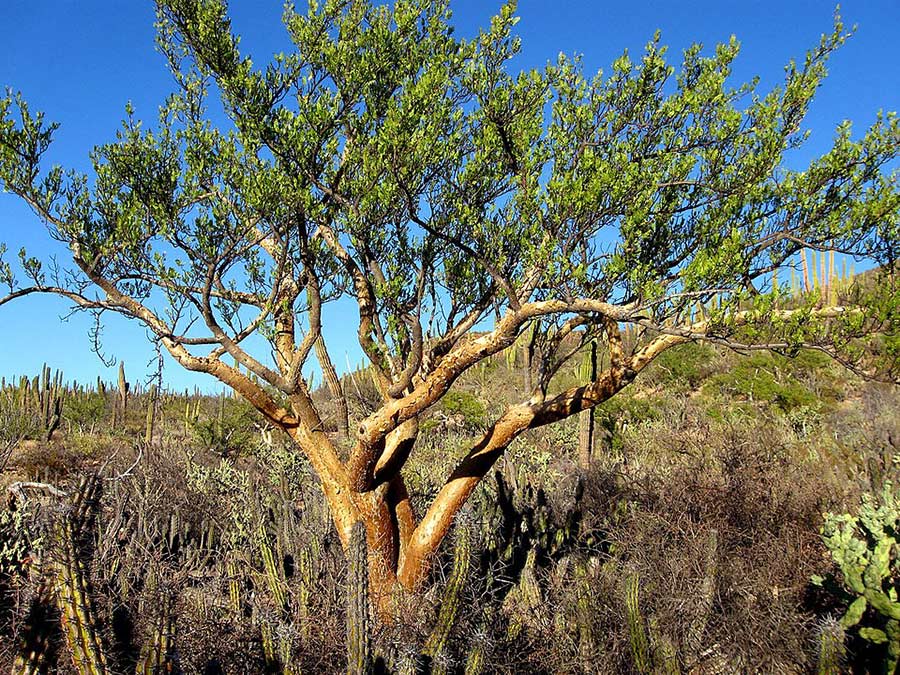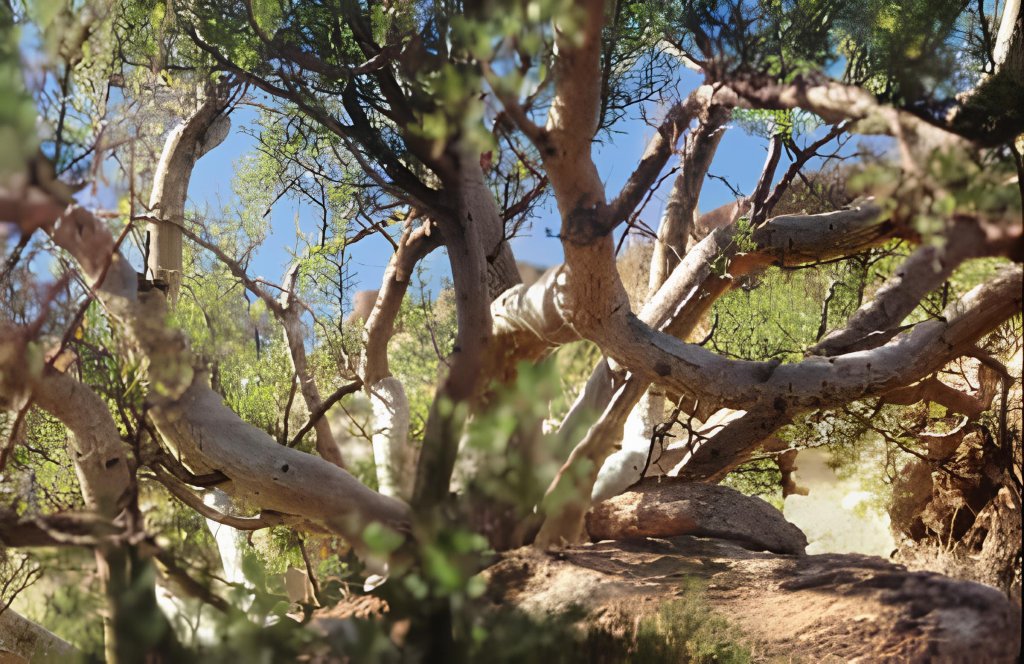Scientifically called Bursera Microphylla, the elephant tree is a Sonoran plant species that grows in some of the driest deserts. But have you ever wondered about why and how the elephant tree flourishes in such extreme conditions? You have come to the right place if you’re eager to learn the same and the key behind its survival.
In the below paragraph, we’ll dive into the details of the desert trees, especially the elephant tree, enlightening its aspects and the capabilities that support its survival and help it flourish in hot and dry desert conditions.
Let’s explore.
Elephant Tree Adpatance to Desert

In the harsh environments where desert flora and fauna have adapted to thrive, the elephant tree exemplifies survival through its deep roots and water storage capabilities. The features listed below will help you be aware of the same while providing a detailed understanding of each factor.
- Deep Root System: Elephant trees possess extensive root systems that go deep into the soil to access groundwater; this ensures a steady water supply throughout, helping to survive in the most arid conditions.
- Water storage: They have large and thick trunks and branches that store water for a long period, allowing them to withstand large drought periods.
- Leaf Surface: Elephant trees have small and leathery leaves that reduce water loss to a great extent through transpiration.
- Sun Tolerance: The waxy cuticle and the reflective surface prevent sunlight from absorbing and, hence, less water consumption even on the driest day.
- Dormancy: Elephant trees have a unique capability of becoming dormant during extreme conditions; this reduces their metabolic activity rate, saving water and ensuring survival.
History and Overview of Elephant Tree
Over the years, the elephant tree’s botanical conditions have developed, making it more suitable to grow in arid conditions. One of the important adaptations is the ability to store water.
It has thick trunks and branches that serve as wonderful water reservoirs, fulfilling the trees’ needs, even during long drought periods. Further, the tree sheds its leaves during droughts, which reduces water loss, contributing to its survival in arid conditions.
Additionally, elephant trees produce sticky resins that not only refrain herbivores but also back from any wounds, preventing water loss. Furthermore, its small and waxy leaves possess a reflective surface that reduces transpiration and prevents the effect of overheating sun. It has big roots that go deep down below the soil to access groundwater, which gets supplied throughout its body and is stored in the trunk and wide branches.
Ecological Role of Elephant Tree
Elephant trees play a crucial role in desert ecosystems. The primary role is being a big shade provider. Its large trunk and wide branches provide a large canopy that provides relaxation beneath its branches from the arid conditions.
This helps numerous species that want relief from the hot and dry weather. Further, this helps small plants grow in their vicinity, adding to biodiversity.
Additionally, the elephant tree’s leaves and fruit are food for various desert herbivores like insects and birds. Apart from that, some animals also use its branches as nesting sites for hunting.
How to Identify an Elephant Tree?
 qui
qui
Identifying an elephant tree with observation is simple; all you need is confirm if that particular tree is an exact match of the below explanation:
Firstly, check for the tree size. As the name suggests, elephant trees are known for their amazing size, which separates them from the surrounding trees. Next, look for its tree trunk. Generally, elephant trees have thick and sturdy trunks, similar to an elephant’s leg. The tree’s bark should look like peeling off something large. Finally, notice the leaves carefully. Elephant trees have tiny leaves with some green dots. Not to mention that elephant trees can only be found in arid regions, i.e., deserts.
Conclusion
All in all, elephant trees resist deserts’ hot and dry climates because of their botanical characteristics. They are used in medications and provide food and shelter to many animals, birds, and insects. These may be rare to find, but if you ever encounter a look-alike, the steps mentioned above can help you confirm whether you have found an elephant tree or not.
Towards the end, please share whether the information meets your expectations and whether the query you were eagerly looking for was resolved.
If you like it, share it!
Frequently Asked Questions
How Do Elephant Trees Survive in Extreme Heat in Deserts?
Elephant trees have a lot of features that ensure their survival even in the most hot and dry conditions. This includes small leaves, reflecting barks, and thick trunks and branches which store water. All these either help in conserving water or fight against the harsh climate.
Why Do Elephant Trees Shade Leaves During Droughts?
For survival. The shading of leaves during droughts is for reducing water loss through transpiration. This sudden change minimizes the trees’ dependence on water resources to a great extent, as shedding leaves conserves moisture in the trunk and branches, increasing chances of survival.
What Animals Depend on Elephant Trees for Their Survival?
Several desert animals depend on elephant trees for their survival. Common names among them are desert tortoises and bighorn sheep. Further, various insects feed on their leaves and stems, while birds nest in their branches.
Is It Possible to Grow Elephant Trees Outside of Deserts?
Probably yes, because of the technological advancement in the sector. However, elephant trees usually grow in arid regions like deserts, so they may require extra care if cultivated in semi-arid regions. Remember, these can’t survive in temperate climates because of their adaptations to survive in a hot and dry climate.

